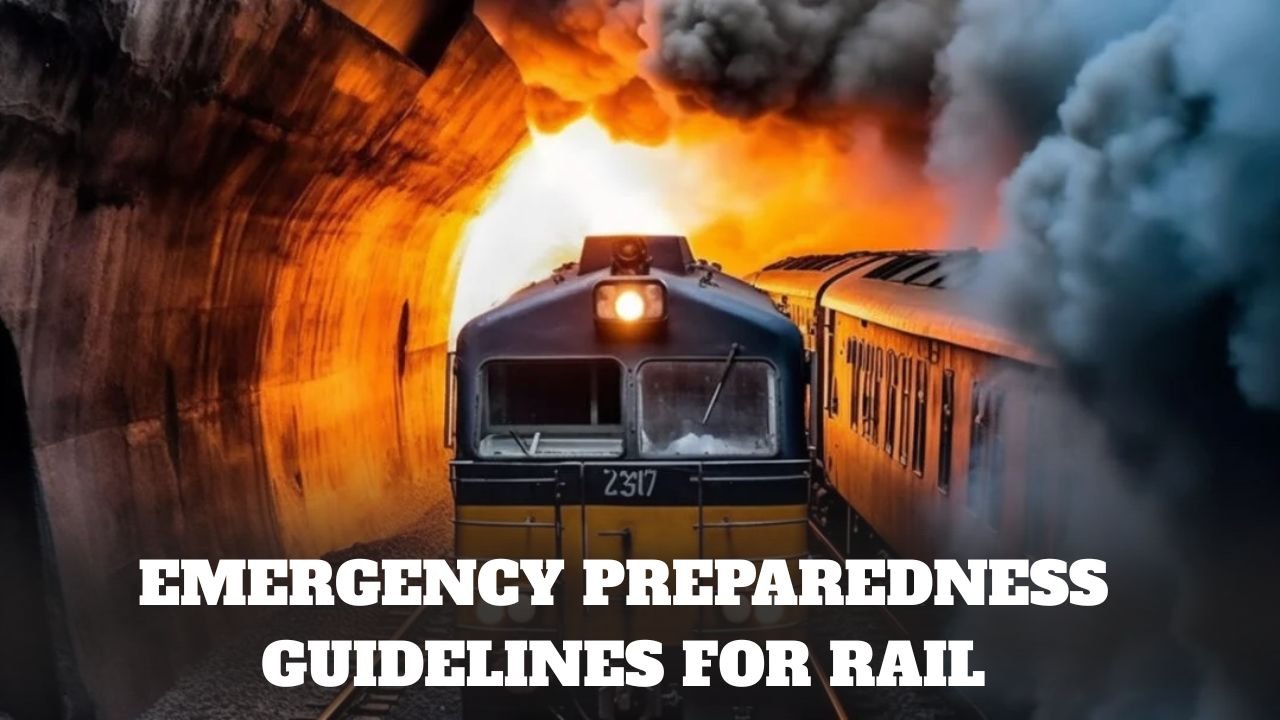Rail transit systems are the lifelines of our cities, helping millions of people reach their destinations safely and on time every day. However, due to the complexity of traffic and technology, emergency situations may sometimes arise in rail services. In such a situation, only an effective and coordinated response can ensure the safety of passengers and the protection of property. To this end, the US Department of Transportation prepared “Recommended Emergency Preparedness Guidelines for Rail Transit Systems”. This report was published in March 1985 and covered four major areas: development of an emergency plan, training, facilities and equipment, and vehicles.
Concept of Emergency Preparedness
Safety planning is divided into two phases: prevention and response. The purpose of prevention is to identify and avert a hazard before an accident occurs, while the response phase is to deal with the incident effectively after it has occurred. These guidelines focus on the response phase, that is, how to control the disaster when it has already occurred.
Scope of the Guidelines
This document focuses on four main elements:
1. Development of an emergency plan
A clear, well-organized, and documented emergency plan is a must for every rail transit system. This plan should include a policy statement, scope of the plan, agreements with external emergency services, rail system roles, procedures, and responsibilities. The plan should also be supported by supporting documents such as experience from other systems and decision-making tools.
2. Training
Merely having a plan is not enough; proper training of employees and emergency service providers is essential to implement the plan. The document describes how initial, specific, and periodic refresher training programs should be developed. It also discusses training tools, inter-system information sharing, and public education—such as passenger awareness and school safety programs.
3. Facilities and equipment
Railway stations, tracks, and central control centers fall into this category. All of these mention construction quality, lighting, emergency exits, communication systems, ventilation, fire protection equipment, graphic signage, and emergency power arrangements. Each component should be designed to ensure quick evacuation of passengers and safety of the system.
4. Vehicles
The guidelines cover two types of vehicles—passenger rail vehicles and special vehicles used in emergencies. These vehicles require features such as lighting, exit systems, on-board equipment, communication systems, and emergency power sources. The purpose is to enable the vehicles to become a cohesive unit in case of an emergency.
Other supporting documents
These guidelines also mention some other documents to make them more effective, such as:
- NFPA 130: Standard for Fixed Guideway Transit Systems
- Design Guidelines by APTA
- Technical Specification Reports by UMTA
All these resources can help rail transit systems better plan and improve.
Emergency Plan Development: Essential Elements
Policy Statement
Each transit system should develop a policy statement clearly outlining its commitment to safety. This statement should come from high-level management and clearly state the plan’s goals and objectives.
Scope and Procedures
Procedures should be developed to define emergencies and all activities that occur during them, including reporting the emergency, summoning a response team, ensuring passenger safety and evacuation, and restoring normal system operations.
Interorganizational Agreements
Rail transit systems should enter into pre-defined agreements with outside agencies such as fire departments, police, and medical services. These agreements should include service levels, response times, financial responsibilities, and chain of command to ensure better coordination in an emergency.
Conclusion
The “Recommended Emergency Preparedness Guidelines for Rail Transit Systems” document provides not just technical suggestions, but a practical framework that any rail transit system can use to strengthen its emergency response. Following these guidelines not only ensures the safety of passengers but also maintains the reliability and efficiency of the rail network.
While rail services are constantly being modernized, such preparedness not only protects us from potential disasters but also moves us towards an aware and responsive transit system. If these guidelines are followed seriously, rail travel can become even more safe, structured and reliable.
